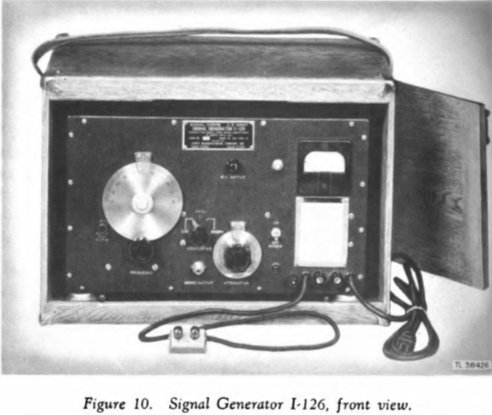Difference between revisions of "I-126"
| Line 5: | Line 5: | ||
==References== | ==References== | ||
| − | * TM 11-1063 | + | * TM 11-1063 Signal Generator I-126-(), 43 pages. PB 23503 - BSIR 2(3):192; 07/19/46 |
Latest revision as of 16:07, 29 June 2020
The function of this instrument was to furnish a signal of desired radio frequency, which was used for the alignment of radio receivers and other test operations. This instrument generates r-f signal voltage in two bands; band A, 15 to 25 megacycles and band B, 195 to 225 megacycles. Selection of the desired frequency band is accomplished by means of a plunger type RANGE switch operated from the front of the panel. The signal may be unmodulated, at approximately 30 percent, by an audio frequency of 400 to 8.200 cycles, depending on the setting of the MODULATION switch. The desired frequency is then selected by turning the FREQUENCY knob to the correct setting of the dial. A calibration chart covering both frequency bands is mounted on the front panel. A signal output up to 100,000 microvolts can be obtained by proper seting of the ATTENUATOR dial. The output meter, located on the front panel of the signal generator, indicates the oscillator grid current.
References
- TM 11-1063 Signal Generator I-126-(), 43 pages. PB 23503 - BSIR 2(3):192; 07/19/46
